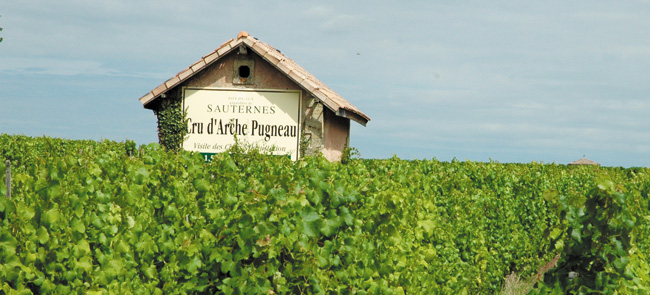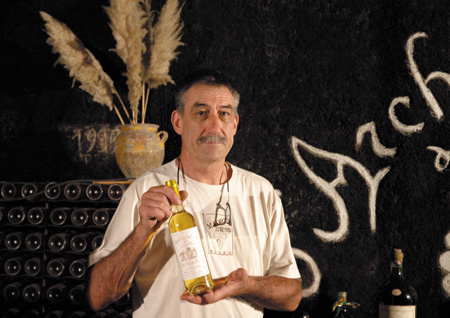Some call it “Burgundy of Bordeaux”, we are in the Sauternes area where part of the vineyard is still split in many small plots, farmed by owners who seek excellence for the fine Sauternes wines. Château Cru d’Arche Pugneau is one of them.
Very old family whose origins in the region date back 1670, Louis Gabriel Daney, husband of Henriette Destanque, owner of the neighbouring Château Peyraguey Le Rousset, purchases in 1923 Cru d’Arche Pugneau. Jean-Francis Daney (or Francis), Louis' grandson, is the current owner and manages 11 ha of vineyard in the old village of Boutoc now part of Preignac.

Like all the wines of this enclave of Sauternes, formerly marketed under the name “Cru de Boutoc”, Cru d’Arche Pugneau takes advantage of an outstanding terroir between the chateaus Suduiraut, Rieusec, Yquem, but also Haut Peyraguey, Rayne Vigneau, Sigalas Rabaud, Lafaurie-Peyraguey and Rabaud Promis (1st Cru of Sauternes). It is planted with 80 % Sémillon, 15 % Sauvignon Blanc and 5 % Muscadelle, the typical varieties of the Sauternes wines. Although the allowed yield is 25 hl/ha, they produce an average 15 or 16 hl/ha at Cru d’Arche with one and half up to six sortings of the grapes according to its maturity at harvest time, a guarantee of quality of the estate's wines.
Francis Daney crafts his Sauternes with passion and produces from 15 to 25,000 bottles a year with three different wines: Château Cru d’Arche Pugneau-Trie exceptionnelle for which the grape is picked over 18.5° alcohol then vinified in recent barrels for at least 3 years and no added yeasts; Château Cru d’Arche Pugneau Intemporel which is a blend of several vintages based on the Spanish solera system, and Château Cru d’Arche Pugneau aged at least 2 years in barrels.
1990, 2003 and 2005 are the greatest vintages of the estate, without forgetting 2011! A vintage that Francis refers to as “extravagant and suitable for the real connoisseurs of Sauternes wines” with a perfect growing cycle, perfectly mastered over maturity and botrytis, and élevage in barrels that will end only when the last five will be finished.
Francis also is an insatiable storyteller as soon as one gets interested in the history of the Sauternes wines. He still has his grandfather's Féret Edition guides and the visit of his barrel cellar sets us back many years. Cru d’Arche Pugneau has no other buildings than the production premises and no chateau, but you really have to stop there when you are in the Sauternes region (visit possible by appointment all year through) ...
Valérie Massot Germe